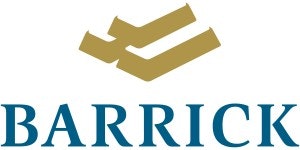Last week, the gold price dropped below a psychologically important barrier at $1,500. Since mid-2011, the SPDR Gold Shares ETF (NYSEMKT:GLD) has lost almost one-fourth of its value, while the Market Vectors Gold Miners ETF now trades at half of its former valuation, raising the question of whether mining stocks are a bargain now.

After a short excursion on the different notions of costs, I will thus compare the production costs of the two major mining companies Barrick Gold Corporation (NYSE:ABX) and GoldCorp Inc. (USA) (NYSE:GG).
Different notions of production costs
Before we turn to these companies, let us quickly compare the different notions of production costs:
Cash costs per ounce: The money needed to produce one (troy) ounce of gold in your existing gold mines.
All-in sustaining cash costs per ounce: The money needed to produce one ounce of gold if you prorate all costs incurred during the life cycle of a mine.
The second number looks like the number to go for. In detail, Barrick Gold Corporation (NYSE:ABX)’s current definition of all-in costs
“… adds [to the total cash costs] sustaining capital expenditures, corporate general and administrative costs, mine site exploration and evaluation costs and environmental rehabilitation costs.
This measure seeks to represent the total costs of producing gold from current operations … [but] is not representative of all of the Company’s cash expenditures.”
Barrick Gold Corporation (NYSE:ABX) 2012 annual report, p. 31
A caveat is that the World Gold Council is yet to finalize this standard, which is expected not before the middle of 2013. A comparison of costs among different companies should thus taken with a grain of salt. This new measure is also critized that it does not include taxes nor the costs to get new projects rolling. For this reason, I will offer at the very end of this article an alternative all-embracing metric (for what it’s worth).
The first notion, cash costs per ounce, looks rather simple. But what happens if you produce gold for, say, $1100, but while doing so, you stumble across a silver nugget that is worth $150? Do you report production costs of $1100 or $950?
If you do the latter, you report gold cash costs on a by-product basis. You would do this if you see yourself primarily as a gold producer. On the other hand, if you want to account your gold and silver sales separately, you would report gold cash costs on a co-product basis. In this case, you would assign a fraction of your ongoing costs to your silver department, but which fraction?
Here the term on sales basis comes in. Assume that you can sell your gold for $1500, i.e. ten times the silver price. In other words, the silver nugget contributes 1/11 to your income. You would then attribute 1/11th of your production costs to silver and 10/11 to gold. You end up with gold production costs of $950 on a by-product and of $1000 on a co-product basis.
The difference looks negligible, but only because I took simple numbers. (This explanation is based on the footnotes on p. 32 of GoldCorp Inc. (USA) (NYSE:GG)’s annual report.)
Production costs for Barrick Gold Corporation (NYSE:ABX) and GoldCorp
Our excursion on production costs can be summarized that the by-product costs are lower because the profit generated by other metals (like silver) is taken to subsidize gold production. The all-in costs are higher because they take into account also the costs incurred in early and late stages of a mine’s life cycle.
How do the numbers look in practice? The numbers for GoldCorp Inc. (USA) (NYSE:GG), according to their 2012 annual report, in dollars per ounce:
| Metric | 2010 | 2011 | 2012 |
| cash costs (by-product) | 271 | 223 | 300 |
| cash costs (co-product) | 447 | 534 | 638 |
| all-in sustaining cash costs | 874 |
These numbers appear to be sufficiently below the gold price even if the latter slips further. But be aware of the 10-20% annual increases in the cash costs.
The numbers for Barrick Gold Corporation (NYSE:ABX), according to their 2012 annual report, in dollars per ounce:
| Metric | 2010 | 2011 | 2012 |
| cash costs (by-product) | |||
| cash costs (co-product) | 409 | 460 | 584 |
| all-in sustaining cash costs | 649 | 752 | 945 |
Again, the numbers appear to allow for good profit margins even in moderately pessimistic scenarios. The relative increase in the costs is similar to GoldCorp Inc. (USA) (NYSE:GG)’s.
Balance sheet-based production costs per ounce
The true production costs are supposed to be higher than the all-in sustaining cash costs. Treating the company as a black box that sells gold and makes a certain amount of profit thereby, the most simple thing to do is to divide the profits by the amount of gold sold.
Subtracting the profit from the price realized in the market, I arrive at the balance sheet based production costs per ounce on a by-product basis (“by-product” in analogy to the cash costs where the profits from other metals subsidize gold’s margins). A similar approach is to divide the difference between turnover and operating cash flow by the number of ounces sold.
These balance sheet-based costs in dollars per ounce:
| Company | 2010 | 2011 | 2012 |
| Barrick Gold | 777 | 978 | 1763 |
| GoldCorp | 412 | 824 | 942 |
These numbers are based on the 2012 annual reports, with a bit of guesstimation on my behalf on the average price of sale. Even if you add (say) a 10% security margin around these numbers, they remain well above the all-in sustaining cash costs. While the latter numbers seemed pretty close for both companies, it appears as if Barrick Gold Corporation (NYSE:ABX) has to fight some overhead costs that do not appear in the numbers published by the company.
The numbers are based on the (GAAP) net profit line in the balance sheets. Taking the (non-GAAP) adjusted net profit, which are adjusted for one-time gains and losses, one arrives at adjustedbalance sheet based production costs per ounce on a by-product basis, in dollars per ounce:
| Company | 2010 | 2011 | 2012 |
| Barrick Gold | 786 | 954 | 1147 |
| GoldCorp | 815 | 862 | 987 |
Here, the numbers do not look as devastating anymore; but still, notice the 10% and 20% annual increases in the costs for GoldCorp Inc. (USA) (NYSE:GG) and Barrick respectively. See the Foolish Fundamentals: GAAP for a discussion whether to use the adjusted or non-adjusted profit (bottom line: if you trust management, take the adjusted numbers).
Balance sheet based costs on a co-product basis
These numbers were on a by-product basis. What happens if we try to calculate the costs on a co-product basis, i.e. ask separately for the costs for each metal produced? I will quickly go through the calculation, but be aware that the allocation of production costs to the various metals is somewhat arbitrary.
The calculation is based on the methodology to calculate cash costs on a co-product basis. In 2012, copper contributed about 8%, silver about 17% and gold about 75% to GoldCorp Inc. (USA) (NYSE:GG)’s revenue. Similarly, 12% of Barrick’s income is due to copper and 88% due to gold (apparently, they do not produce silver, or I have missed that in the annual report). These are the ratios that I apply to calculate the portions of the production costs for the respective metals.
To make a long story short, the up-shot is that the costs on a co-product basis increase by $50-$100 for Barrick in comparison to the by-product numbers, while the costs for GoldCorp increase by $100-$200. The steeper increase for GoldCorp is due to the fact that its by-product numbers were lowered significantly by silver profits.
Based on the adjusted net profit for 2012, the costs are $1209 for Barrick and $1157 for GoldCorp, which does not lie too much apart anymore. (On a side note, GoldCorp’s silver production costs for 2012, obtained via this method, amount to $21 per ounce.)
To summarize, these numbers leave a little room for the gold price to drop, but not too much. But to put things into perspective, I believe that the by-product costs obtained in the previous paragraph are better suited to describe the capability to survive in challenging scenarios.
Conclusion
I did some research and wrote this article primarily to ease my mind on my recent purchase of GoldCorp shares. The official numbers from GoldCorp and my own back-of-the-envelope calculations let me believe that they have production costs under control (around $1000), while I am more sceptical for Barrick Gold. The 10% annual cost increases do alarm me, however, but I hope that the last word is not spoken yet in this regard.
To be sure, this is not the only possible way to evaluate the companies: Both have roughly the same market cap, while Barrick sold in 2012 about three times as much gold while its reserves are more than twice as large. If you have some faith in Barrick’s management, the company could well be a bargain, but be prepared for some trouble in the short term if gold slips further.
As a final disclaimer, while I went through the numbers with some care, I cannot guarantee that they are without flaws. As always, do your own research — the companies’ annual reports make for a splendid bedtime reading.
The article 2 Gold Miners Fighting to Control Costs originally appeared on Fool.com and is written by Frank Schirmeier.
Copyright © 1995 – 2013 The Motley Fool, LLC. All rights reserved. The Motley Fool has a disclosure policy.


